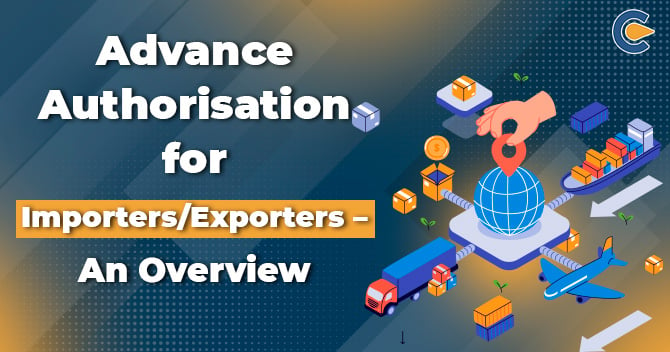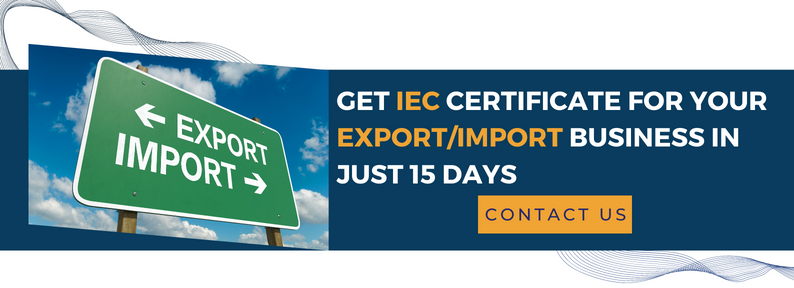It’s always important to maintain the value of exports and imports, i.e., the value of exports should be more than the value of imports. The Government of India has introduced various schemes to boost exports made by the country. All the activities related to import and export are governed by the FTP or Foreign Trade Policy, which is intended at increasing the exports of the country and using trade expansion as an effective instrument of economic growth & employment generation. The current Foreign Trade Policy intends to keep in line with the Make in India vision and supports exports made by the SEZs or Special Economic Zones, EOUs or Export Oriented Units, etc. Scroll down to check more information regarding the Advance Authorisation for Importers or Exporters.
What is the Advance Authorisation Scheme?
The AA or Advance Authorisation is a duty exemption scheme for exporters facilitated by the Government of India. It’s offered through the DGFT or Directorate General of Foreign Trade and incentivises the import of required raw materials & additives that are physically incorporated into a product that is bound for exports. There can be fuel, power, catalysts, or oil consumed in the production of the export items. The Advance Authorisation Scheme makes the import of such inputs duty-free. The scheme also permits a normal allowance for the wastage of these inputs. Notification regarding the products or being excluded/included from the ambit of Advance Authorisation is released as and when needed by the DGFT in the form of public notices.
AA Scheme has been referred to as an Advance License in some places as well. The input or output connection is set up based on guidelines given in the scheme, as are the eligibility, the value addition criteria & several other aspects related to the scheme.
Who is eligible for this scheme?
Benefits of Advance License can be availed of by the merchant exporter or manufacturer exporter association with the supporting manufacturer. It’s also available to sub-contractors or projects where the name of the sub-contractor is mentioned in the contract, in an instance of supply to the UN (United Nations) or other aid programs. Payment for such types of contracts should be received in freely convertible foreign exchange.
It’s issued for physical exports such as exports to SEZs, intermediate supplies, and supply of stores on-board aircraft or vessels, subject to conditions. Import of obligatory spares, if required to be given with the exported item, is covered under the duty-free advantage to a maximum of 10% of the CIF value of Authorisation.
Advance Authorisation for Annual Requirement
AA is also available as an annual requirement, but only for products notified in the SION, except where the item or product of input appears in Appendix 4J of the Handbook of Procedures 2015-20. To be eligible for the AA annual requirement, an exporter should have the export performance for at least the last two Financial Years. The FOB value of the export realised should be more than 15% of the CIF Value of the input covered by the Advance Authorisation Scheme.
Under the annual requirement, the amount eligible for the import of raw materials would be 300% of FOB Value physical export or FOR Value of deemed export/Rs. 1 crore, whichever is higher.
Documents Required for Obtaining Advance License from DGFT
Following are some vital documents required for obtaining an Advance License from DGFT:
- DGFT DSC;
- Copy of valid RCMC;
- Copy of IEC License;
- Copy of EHC or Export House Certificate (if required);
- Application Form ANF-4A;
- Copy of GST Registration Certificate;
- Copy of MSME or IEM or SSI.
How can you apply for the Advance Authorisation Scheme?
You have to visit the official portal of DGFT and file the application of the Advance Authorisation (AA) and this process is totally online now.
Validity of Advance Authorisation
Advance Authorisation is valid for 12 months from the issuance date of such Authorisation. In the case of deemed exports, the Authorisation is associated with the contracted duration of project execution/12 months from the date of issuance, whichever is more. However, the export obligation may be executed within 18 months from the date of issue of Authorisation or as informed by the DGFT[1]. Unless specified, the export proceeds should be realised in freely convertible currency.
Actual User Condition for Advance Authorisation
The AA issued and the materials imported thereunder will be with original or actual user condition. This means that the actual user may import such goods alone. The Authorisation will not be transferable even after the accomplishment of export obligation.
What are the Various Grounds for Issuing Advance Authorisation?
AA can be issued for inputs used in the product that is to be exported on the basis of the following grounds:
- SION or Standard Input Output Norms notified: The DGFT, on the recommendation or suggestion of the Norms Committee, issues standard or usual norms that define the amount of input needed in the manufacture of a unit of the final product or item that will be exported. It’s available for a broad range of items or products.
- Self-Ratification Scheme: AA under this scheme is only available to an exporter who holds the AEO Certificate under the Common Accreditation Programme (CAP) of CBEC. This scheme can be selected for when there is no SION or valid ad-hoc norms for an expert product and also where SION has been informed; however, the exporter wants to use extra inputs in the manufacturing process. Ratification by the norms committee is not needed under this scheme& the regional authority may grant AA upon fulfilment of the relevant conditions.
- Self-Declaration: At times, the SION is not available for a specific product. In such a condition, an application may be made to the Regional Authority, who will issue the AA upon review.
- Application prior to fixation of the standard norm by the Norms Committee: There is another option for an exporter where the SION is not defined to make an application to the norms committee, requesting the same. After giving all the vital data to the committee, they shall endeavour to either fix these norms or facilitate ad-hoc norms on the basis of the application made. Such ad-hoc norms are valid for one Authorisation only & no-repeat authorisations can be issued.
Export Obligation under Advance Authorisation Scheme
For beneficiaries of AA, there is an EO or Export Obligation in terms of the exports’ value that should be fulfilled within a particular time frame. The Export Obligation is mentioned in the Authorisation itself and not achieving it in time can lead to penalties. Once the Export Obligation is met, one has to retain evidence of the same and provide it when needed. The period specified is eighteen months from the issuance date of the Advance Authorisation, but it can vary from inputs like supplies to turnkey projects, military, defence, etc.
Conclusion
So, the overall reason behind allowing duty-free inputs is to enhance exports. The company will incorporate these acquired inputs into a product so that it may be exported. In the case of AA, the Export Obligation is the value of export that requires to be achieved within a prescribed time period compulsorily.
Read our Article:Duty Free Import Authorization Scheme – An Overview













